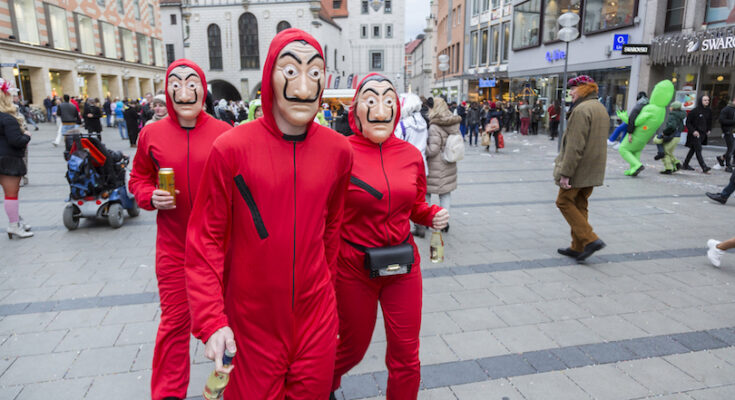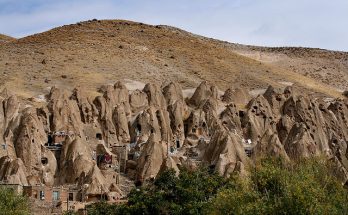One of the most popular cities to visit in Germany, Bavaria’s capital Munich has a marvelous altstadt to explore and many great churches, palaces and museums to check out. Each year, millions descend upon the city to celebrate Oktoberfest – the world’s largest beer festival.
If you’re not a fan of big crowds and beer, then the quieter, cheaper months of March to May are probably a better time to visit! Summer also sees huge numbers pour in, come to enjoy the good weather and relax in all the pretty green parks alongside the river. December too is a popular month due to the magical Christmas markets.
To help you plan your trip, let’s take a look at what to expect each month in Munich in terms of its climate, crowds and cultural events.
In this post, we’ll cover:
What’s the Weather Like in Munich
As the city lies at the northern edge of the Alps, it experiences quite a lot of rain throughout the year. Each month sees between 12 and 17 days with at least some rainfall; summertime being the wettest period. Rainstorms can also appear violently and unexpectedly so it’s well worth packing a jacket or umbrella whenever you go!
While summers are relatively warm, averaging between 21 and 23°C (70 to 73°F), winters are quite cold and overcast with snow often falling. A phenomenon known as the Föhn wind can suddenly raise temperatures sharply though, even in December and January. Both the spring and autumn are more moderate weatherwise with many visiting then as a result.
Best Months to Visit Munich

Whether it is biergartens and the Bundesliga that you are after or the enormous Oktoberfest celebrations and cozy Christmas markets, the city always has something exciting going on. The only quiet period really is at the beginning of the year and in November. This is when the cold, dreary weather puts most people off.
As things are warming up and the flowers are blossoming, spring is one of the best times to visit. It is much calmer, cheaper and less crowded than both summer and autumn when lots of Munich’s main events take place. Along with December, these are when the vast majority of visitors come to explore the handsome historic center.
Munich in January

Once the Christmas holidays and New Year’s Eve celebrations are over, a quiet calm falls over the city. Averages of just 2°C (35°F) make spending time outside uncomfortable with temperatures often dipping below freezing at night. While you may get pristine snow, slushy rain is just as likely.
Due to the cold weather and dark, overcast days, most visitors stay away with both hotel and flight prices being much cheaper. If you wrap up warm, you can head off to explore little alpine villages or ski amidst the snow-coated mountains. Otherwise, there are tons of hearty traditional dishes to try in its cozy restaurants.
Munich in February

A couple of degrees warmer and a bit drier, February is also considered to be the off-season in Munich. As such, there are barely any queues or crowds at any of the main attractions and museums. Although not as big as in Cologne, the fun Fasching carnival does take place if you want to experience an interesting part of Bavaria’s rich cultural heritage.
Apart from this, tourism is slow with most hotels offering reduced rates. When there aren’t grey skies and drizzle, ambling about the center is still very pleasant in the crisp air. If there is snow, Englischer Garten looks absolutely amazing, as do the nearby mountains where you can ski, snowboard or enjoy apres-ski DJ sets.
Munich in March

While it is still rather quiet, March at least has a couple more hours of daylight to make use of. Average temperatures of 8°C (46°F) mean you’ll still want to spend most of your time indoors at a museum or sampling typical Munich fare.
Aside from benefiting from the cheaper air fares and hotel rates, you can also take part in the raucous St. Patrick’s Day celebrations. If you miss that, there is the three week-long Starkbierfest where you can swig strong local beers while listening to live music. With all the leaves on the trees starting to bud, cycling around in the parks can be a nice, if cold, experience.
Munich in April

With the weather rapidly warming up, April is when all the crowds return to the city. Besides the Easter holidays, massive events like Fruhlingsfest and Maidult also entice people back to Munich. As well as trying local delicacies and shopping for handicrafts, there are fairground rides and carnival games to enjoy.
Averages of 13°C (55°F) are much more comfortable for wandering about though you’ll still need to layer up. While the prices are higher, there is a vibrant atmosphere in town with all the colourful flowers and trees painting a very pretty picture. Before they get too busy, it’s worth taking day trips to places like Neuschwanstein Castle or Rothenburg ob der Tauber.
Munich in May

May is even busier as average temperatures of 18°C (64°F) make sitting outside at its cafes and biergartens much more enjoyable. Aside from soaking up the sunshine, you can listen to oompah bands on May Day and peruse all the Corso Leopold street festival’s artsy stands. Hundreds of concerts are also held all around town for the Lange Nacht der Musik.
With so many people pouring in, accommodation is more expensive and queues form at its main tourist sights. Summer and autumn are even busier, however. While it rains quite a bit – 17 days on average – cycling about the surrounding countryside is still lovely as everything is so green.
Munich in June

Before the center gets completely overrun, the first two weeks of June are relatively relaxed with temperatures averaging 21°C (70°F). Once the city celebrates its founding around the middle of the month, fun street parties, concerts and food markets pop up everywhere.
Plenty of exciting performances are also put on for its month-long Tollwood Summer Festival that stretches into July. The International Film Festival and Christopher Street Day festivities also attract loads of people. Despite there being 16 hours of daylight and heaps of sunshine, June is the rainiest month so make sure to pack an umbrella!
Munich in July

Although it is also quite rainy, July is Munich’s hottest month, averaging 23°C (70°F). Due to the summer holidays and heat, expect to pay high prices and jostle for space in the altstadt. The lush green parks and riverfront look particularly picturesque with sunbathing, swimming and even surfing all possible!
Other than ambling about the center and enjoying its lively ambience, there are the Munich Opera Festival and Kocherlball traditional dances to take part in. In addition, countless rides and stalls are set up for Jakobidult; a German-style folk fair. The long, sunny days are ideal for being outside, sitting in biergartens or hiking and cycling in the Alps.
Munich in August

August in Munich is equally pleasant and popular with lots of open-air concerts and cinemas only adding to the excitement. While busy and expensive, it is the perfect time to explore its beautiful Botanical Garden or splash around and boat about one of its nearby lakes.
While it is still sunny and hot with just as frequent rain, there are a couple less daylight hours in which to stroll about and sightsee. Besides experiencing Jakobidult, there are beach bars and fairground rides to enjoy at the Impark Summer Festival. As it is peak season, museums, riverbanks and day trip destinations will all be pretty packed.
Munich in September

The most crowded (and chaotic) month in Munich though is undoubtedly September as this is when millions of beer lovers head to the city to celebrate Oktoberfest. attracting millions of visitors from around the globe, the famous beer festival features traditional German food, music, and, of course, a wide variety of beers. From the middle of the month up until the first Sunday in October, absolutely everywhere is rammed with hotel and flight prices at their highest. Make sure to plan and book everything well in advance.
As average temperatures remain at 19°C (66°F) and there is much less rain, the start of September after the school holidays have ended can be a good time to explore the altstadt. After that, Munich is insanely busy with funfairs, beer tents, concerts and parades wherever you look.
Munich in October

Once all Oktoberfest’s fun festivities have wrapped up, there are only a couple of relatively calm weeks until Kirchweihdult takes place. The autumn edition of Maidult and Jakobidult has yet more tasty Bavarian food and drink to try alongside all of the rides, games and shows.
Prices are of course still expensive as its hotels, restaurants and bars are full of guests. With averages of 14°C (57°F), you can walk or cycle about its parks, enjoying the golden leaves of their trees. This, too, is a good time to take day trips to nearby castles and palaces or see the countryside and Alps in the autumn while there is still quite a lot of daylight.
Munich in November

After all the unending excitement, the number of visitors drops considerably in November as the increasingly wet, cold and grey days put most people off. With average temperatures of 7°C (44°F) and 15 days with at least some rainfall, exploring both the attractive altstadt and expansive parks is a lot less pleasant.
While hotel and flight prices are finally much more affordable, the gloomy weather creates a rather sombre atmosphere. Things do liven up a bit towards the end of the month when its Christmas markets and the Tollwood Winter Festival are set up.
Munich in December

December is another hugely popular month to visit as its holiday decorations and Christmas markets make the center look so beautiful. With hundreds of stands to peruse and so many concerts, dances and plays taking place, it is no wonder millions of people pour in.
Although everything is expensive, there is an enchanting feel about Munich with its Tollwood Winter Festival being one of the largest celebrations of its kind in the world. Despite the cold days and freezing nights, it is well worth visiting for its festive ambience. You’ll have to wrap up warm though and grab a gluhwein or two at the lovely Christmas markets!



